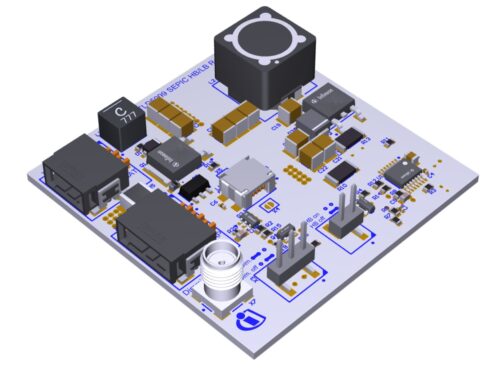The automotive lighting reference design simplifies the integration of high and low beams in automotive lighting, using a versatile SEPIC topology for cost-effectiveness.

Automotive front light LEDs have revolutionized vehicle lighting systems, offering significant advantages over traditional halogen and xenon bulbs. These LEDs are prized for their superior durability, energy efficiency, and longer lifespan, reducing the frequency and cost of replacements. Moreover, LEDs provide better illumination, enhancing road safety by improving visibility during night driving and in adverse weather conditions. Their ability to light up almost instantaneously also increases driver reaction time, enhancing safety. As environmental concerns grow, the energy efficiency of LED lights aligns well with the automotive industry’s shift towards sustainability. These benefits make LED technology a crucial component in modern automotive design, paving the way for safer and more efficient transportation. Infineon Technologies has launched the reference design for the automotive front light LED with SEPIC topology to simplify the design process.
The reference design combines the high and low beams of a vehicle’s front light using the TLD5099EP from the LITIX Power family. This controller, adaptable for multi-topology DC-DC operations, is configured in a current-controlled buck-boost SEPIC setup. A single DC-DC channel powers both the high and low beams, allowing the high beam to independently operate concurrently with the low beam or the low beam. This design is cost-effective, making it suitable for entry-level LED headlamps. Additionally, it features PWM dimming to adjust brightness and manage thermal derating under extreme conditions. The system includes advanced diagnostics and transient robustness, with EMC performance that meets CISPR25 standards.
Applications of this technology extend across various automotive lighting solutions. It is primarily used in automotive front lights, including high beam and low beam settings, which enhance visibility under different driving conditions. Additionally, it serves well for daytime running lights and turn indicators, improving vehicle visibility and signaling intentions to other road users during the day. This technology is also effectively employed in motorcycle headlamps, offering enhanced illumination and safety for smaller vehicles on the road.
The design’s benefits include performance and cost-effectiveness. It has been tested against transient pulses, ensuring robustness and reliability under varying electrical conditions. It also complies with electromagnetic compatibility (EMC) standards, minimizing interference with other electronic devices. Thermal testing is a part of its development, confirming that the system performs under different temperature conditions. Additionally, the design focuses on cost optimization, making it economically viable while maintaining quality and functionality.
Additionally, the design incorporates an integrated pulse width modulator for straightforward implementation of a dimming function, which helps reduce colour shifting. It also features a spread spectrum modulator that enhances EMI performance. The system is versatile, supporting fixed current and voltage configurations across various topologies, including Boost, Buck, Buck-Boost, SEPIC, and Flyback, by merely adjusting external components. The TLD5099EP controls a low-side n-channel power MOSFET using an internal 5 V linear regulator.
Infineon has tested this reference design. It comes with a bill of materials (BOM), schematics, etc. You can find additional data about the reference design on the company’s website. To read more about this reference design, click here.






